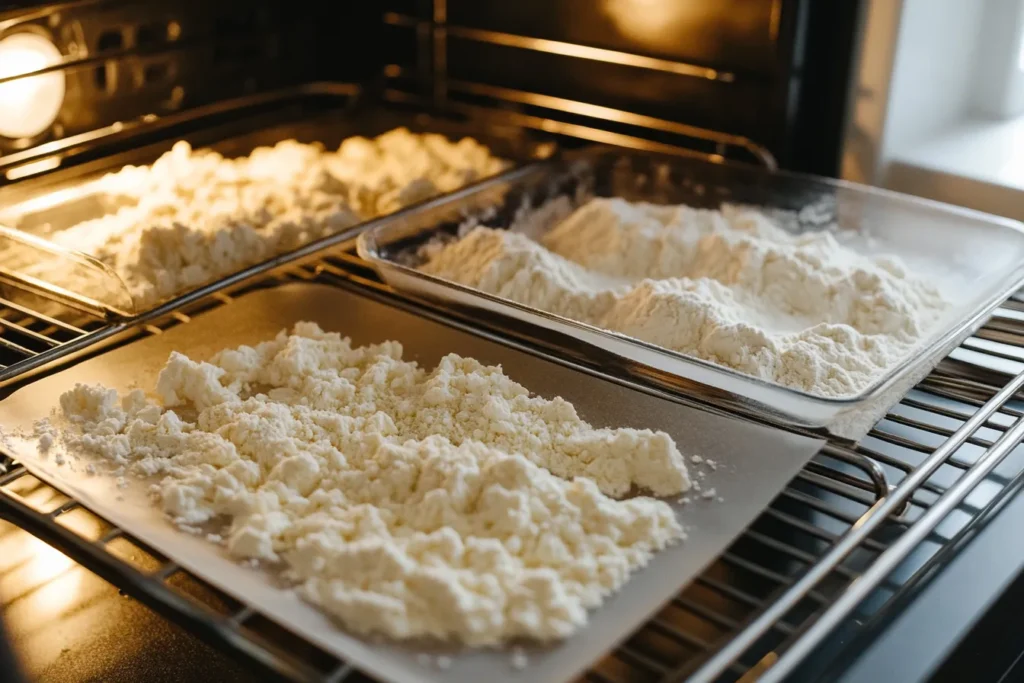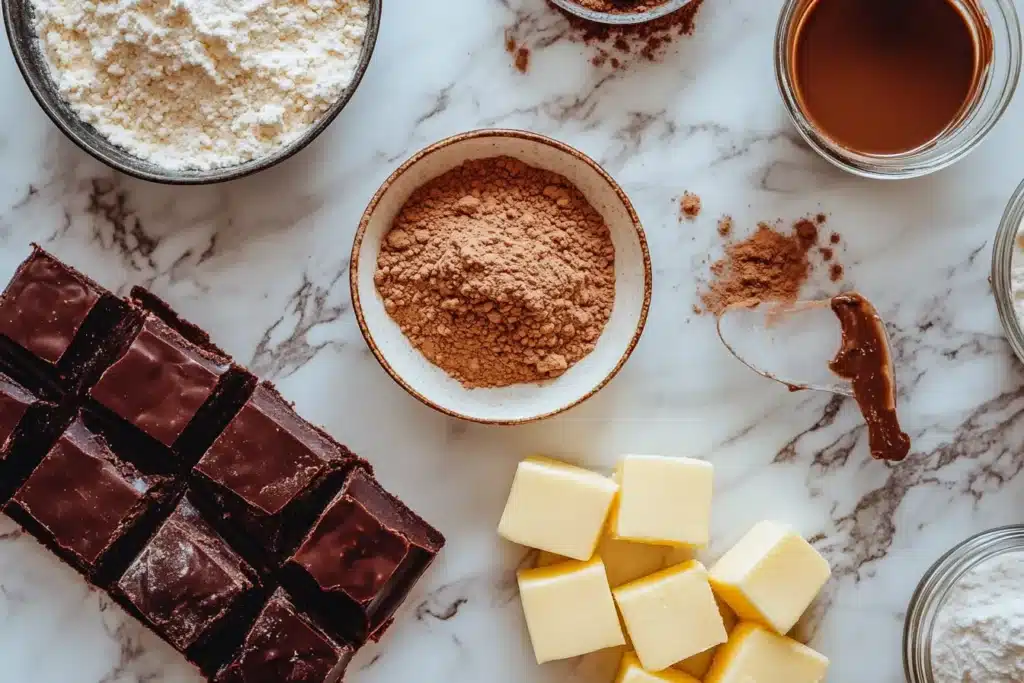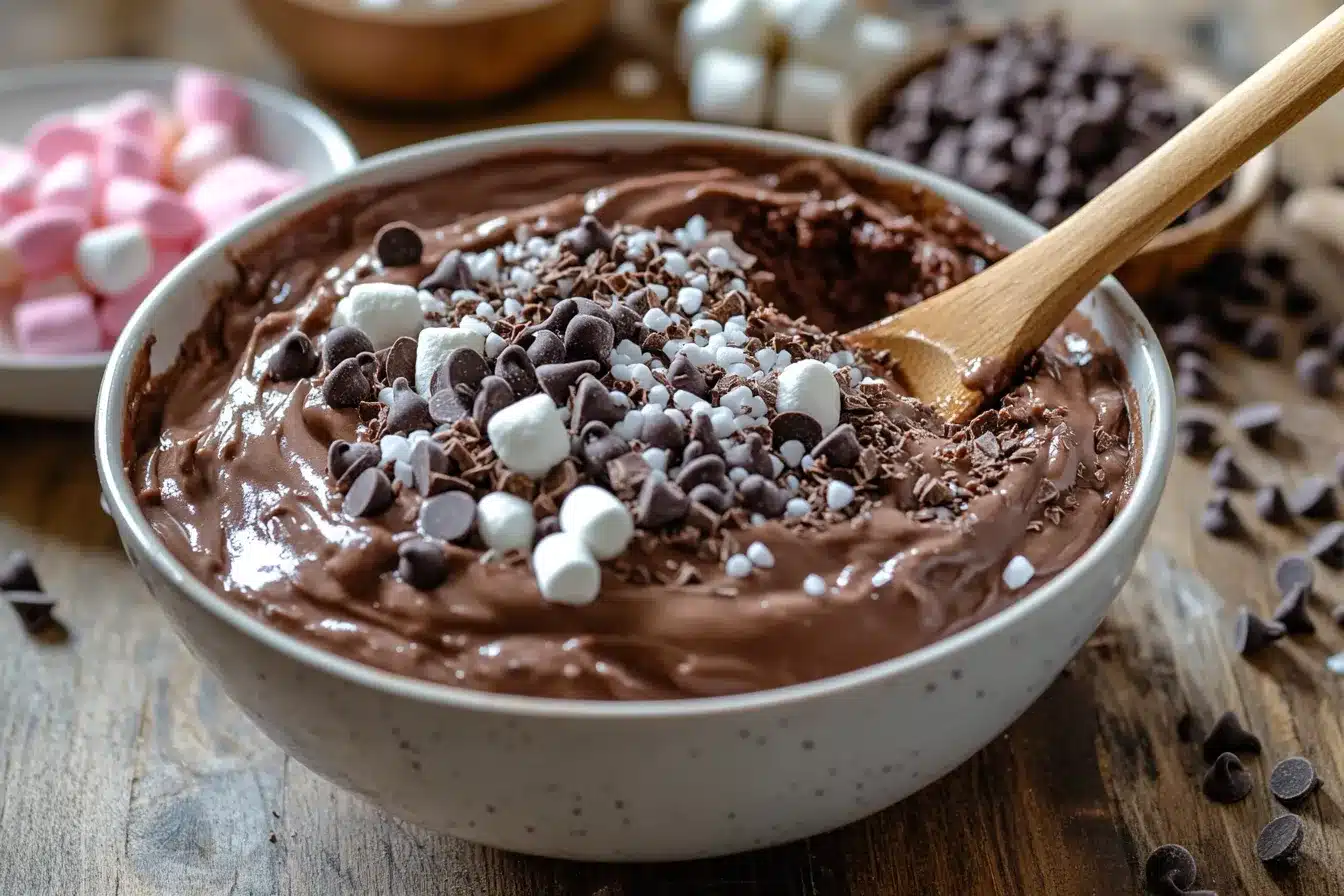Table of contents
Who hasn’t snuck a spoonful (or three) of brownie batter while baking? It’s a universal experience, a rite of passage, even! But, raw batter contains ingredients like raw eggs and flour, which, as we all know, can pose a health risk. The good news? You can absolutely indulge in that irresistible taste of brownie batter, safely, by making it edible. Therefore, this article will be your complete guide, covering everything from what makes brownie batter unsafe to how to create your own perfect, safe-to-eat version. Additionally, we’ll explore various flavor options and serving ideas. So, grab a spoon, and let’s get started on this delicious adventure!
Understanding the Risks of Raw Brownie Batter
Why You Shouldn’t Eat Traditional Raw Brownie Batter
The main concerns with eating traditional, unbaked brownie batter revolve around two key ingredients: raw eggs and raw flour. Raw eggs, for example, can carry Salmonella bacteria, which can cause food poisoning. This isn’t just a mild tummy ache, we’re talking about some unpleasant symptoms like nausea, vomiting, and fever! Similarly, raw flour, which seems innocuous, can harbor harmful bacteria like E. coli. These bacteria can also lead to foodborne illnesses. Now, I know, that batter tastes so tempting, but let’s keep it safe and smart, right? Because, our health is certainly worth the extra step.
The Dangers of Raw Eggs & Raw Flour
Let’s break down those hazards a bit more. Salmonella isn’t something to mess around with! It lives inside the chickens and then comes onto the outside of the egg, and consequently, it can be passed on to humans, causing some pretty uncomfortable situations and definitely not a fun party crasher. Then, raw flour. It’s essentially a raw agricultural product. This means it can be exposed to all sorts of bacteria including E. Coli and other pathogens during the growing and milling process. While the flour goes through a milling process, it doesn’t undergo any treatment that would kill these harmful bacteria. Therefore, it’s best to steer clear of raw flour, my friends. The risk of getting sick far outweighs the temporary delight of a spoonful of batter. Even though the temptation can be strong, our well-being is always the priority.
Making Edible Brownie Batter: The Safe Way

Heat-Treating Flour: A Game Changer
The secret to safe edible brownie batter lies in heat-treating the flour. This process effectively kills any harmful bacteria, making it completely safe for consumption. Don’t worry, it’s easier than it sounds! All you need to do is, spread the raw flour on a baking sheet and bake it in a preheated oven at 300°F (150°C) for about 5-7 minutes, or until it reaches an internal temperature of 165°F (74°C). Also, you can achieve the same results by microwaving the flour on high in 30-second intervals, stirring in between until the flour reaches the proper temperature. Let it cool completely before using it in your recipe. This one simple step is a game-changer! You’ll be able to enjoy your edible batter without worrying about getting sick. Who would have thought that a little heat could save the day?
Egg-Free Options for Worry-Free Indulgence
The other piece of this safety puzzle is to avoid the raw eggs altogether. Luckily, there are a plethora of ways to make edible brownie batter without eggs. Many recipes use substitutes like milk, yogurt, or even applesauce. These substitutes not only eliminate the risk of Salmonella but also add moisture and help to achieve the perfect, gooey consistency we all crave. No need to sacrifice taste for safety! In fact, you may find that you prefer egg-free versions because of the texture they create. Besides, these alternatives are usually easier to work with.
Essential Ingredients for Safe Edible Brownie Batter
So, what exactly will you need? Here’s a breakdown of the essential ingredients for making safe and delicious edible brownie batter:
- Heat-treated flour: The bacteria-free foundation of your batter.
- Unsalted butter: For rich flavor and that gooey texture that melts in your mouth.
- Granulated sugar: To add the perfect touch of sweetness.
- Brown sugar: For a chewy texture and that classic brownie flavor.
- Cocoa powder: The heart of our chocolatey goodness, providing that intense chocolate flavor.
- Milk or non-dairy milk: For moisture and to bring all the ingredients together.
- Vanilla extract: To enhance the flavors, adding a depth of taste.
- Salt: To balance the sweetness and enhance the other flavors.
- Chocolate chips (optional): For extra melty goodness and a burst of chocolate in every bite.
Perfecting Your Edible Brownie Batter: Recipes & Tips
Classic Edible Brownie Batter Recipe
Alright, let’s get to the fun part! Here’s a basic recipe to get you started:
Ingredients:
- 1 cup (120g) heat-treated all-purpose flour
- ½ cup (115g) unsalted butter, softened
- ½ cup (100g) granulated sugar
- ½ cup (100g) packed light brown sugar
- ½ cup (45g) unsweetened cocoa powder
- ¼ cup (60ml) milk or non-dairy milk
- 1 teaspoon vanilla extract
- ¼ teaspoon salt
- ½ cup chocolate chips (optional)
Instructions:
- In a medium bowl, cream together the softened butter and both sugars until light and fluffy. This step is essential for creating the right texture.
- Stir in the cocoa powder and salt. Mix well, making sure there are no lumps.
- Add the milk and vanilla extract. Beat until combined, ensuring a smooth batter.
- Slowly add in the heat-treated flour, mixing until just combined. Be careful not to overmix! Overmixing can result in a tough batter, so it’s crucial to stop when everything is just incorporated.
- Stir in the chocolate chips (if using).
- Enjoy immediately with a spoon, crackers, or whatever you fancy! This is the best part of all!

Tips for the Best Edible Brownie Batter
- Don’t Overmix: Overmixing the batter can result in a tougher texture. Mix until just combined. That’s a golden rule for any baking enthusiast!
- Use Room Temperature Butter: This will make it easier to cream with the sugar and ensure a smooth batter. Cold butter will make it harder to get the light and fluffy texture we’re aiming for.
- Adjust Sweetness: Taste the batter as you go and adjust the sweetness to your liking. Everyone has different preferences, so make it your own!
- Get Creative with Mix-ins: Add in nuts, sprinkles, or different types of chocolate chips to personalize it. The possibilities are endless!
- Chill for a Thicker Batter: If you prefer a thicker consistency, chill the batter in the refrigerator for about 30 minutes before serving. Chilling also enhances the flavors.
Nutritional Data: Serving Size (1/4 of Recipe)
| Nutrient | Amount |
| Calories | ~350-400 kcal |
| Total Fat | ~18-22 g |
| Saturated Fat | ~10-13 g |
| Cholesterol | ~50-60mg |
| Sodium | ~100-150 mg |
| Total Carbohydrates | ~45-50g |
| Dietary Fiber | ~2-3g |
| Total Sugars | ~30-35g |
| Protein | ~3-4g |
Note: These are approximate values and can vary based on specific ingredients and brands used. This nutritional data is for reference only, and should not replace personalized advice from a healthcare professional. Also, consider your individual dietary needs when enjoying this treat.
Flavor Variations and Creative Ideas
Adding Unique Flavors to Your Edible Brownie Batter
Once you’ve mastered the basics, it’s time to experiment! For example, here are some ideas for adding exciting flavors to your edible brownie batter:
- Peanut Butter: Swirl in a tablespoon or two of peanut butter for a classic combo. The salty and nutty flavor pairs wonderfully with chocolate.
- Espresso: Add a teaspoon of instant espresso powder to deepen the chocolate flavor and add a subtle kick. This is perfect for coffee lovers!
- Mint: A few drops of peppermint extract will give you that fresh mint-chocolate taste. Try using a high quality extract for the best flavor.
- Salted Caramel: Swirl in some salted caramel sauce for a sweet and salty treat. Homemade or store-bought works equally well.
- Coconut: Add shredded coconut for a tropical twist. Toasted coconut will add a nice texture and depth of flavor.
Creative Ways to Serve Your Edible Brownie Batter
Who says you have to eat it straight from the bowl? There are tons of ways to enjoy this delectable dessert. In addition, consider these ideas:
- With Fruit: Serve with fresh berries, sliced bananas, or other fruits. The acidity of the fruit balances the richness of the batter.
- As a Dip: Pair it with graham crackers, pretzels, or cookies for a fun dip. This is a great option for parties and gatherings.
- In Parfaits: Layer the batter with whipped cream and crushed cookies for a decadent parfait. This is a lovely way to elevate your treat.
- In Ice Cream Sundaes: A dollop of edible brownie batter on your ice cream is a must-try! It adds a gooey and chocolatey element to a classic sundae.
- Brownie Batter Bites: Roll small scoops of the batter into balls and refrigerate for a delightful treat. These are perfect for grab-and-go snacks.

Frequently Asked Questions (FAQs)
Common Questions About Edible Brownie Batter
Here are some frequently asked questions about edible brownie batter:
- Can I use any kind of flour? While all-purpose flour is recommended, you can use other types like whole wheat, just make sure it’s heat-treated. Also note that the texture may vary slightly with other flours.
- How long does edible brownie batter last? It’s best enjoyed fresh. However, you can store it in an airtight container in the fridge for up to 3 days, though texture might change. It may become a bit firmer upon refrigeration.
- How to use Honey in Brownie Batter? Learn the secrets of substituting honey for sugar, adjusting liquids, and perfecting your brownie texture in our complete guide to baking with honey.
- Is raw brownie batter safe to eat? As discussed, no, traditional raw brownie batter is not safe to eat due to the presence of raw eggs and untreated flour. Therefore it is not recommended.
- What can I use instead of eggs in brownie batter? There are many alternatives like milk, yogurt, or applesauce. These options work exceptionally well to maintain the texture and flavor of the batter.
- How long do I heat treat flour? In the oven at 300°F (150°C) for 5-7 minutes or in the microwave in 30-second intervals until it reaches 165°F (74°C). Always make sure to check the internal temperature of the flour to ensure maximum safety.
Delving Deeper: The Science Behind Heat-Treated Flour
Earlier in this article, we touched upon the heat-treating process for flour. However, it’s beneficial to understand a little more about why this step is so crucial. Essentially, heat-treating kills bacteria, mold and other microorganisms that are found naturally in raw flour. Raw flour is a natural agricultural product, which goes through a milling and grinding process. The process itself does not remove or kill bacteria that may be present on the raw grain. Consequently, it’s necessary to take the extra step of heat-treating before using flour in any no-bake recipe. Not only that, but this ensures that you are not consuming harmful bacteria.
The specific temperature of 165°F (74°C) is important because it’s the temperature at which most harmful bacteria are killed. Therefore, using a food thermometer is always recommended when heat-treating your flour. Additionally, make sure to spread the flour evenly on the baking sheet, or in the microwave, to ensure that it reaches a consistent temperature throughout the whole batch.
Exploring the World of Vegan Edible Brownie Batter
Besides the option of using vegan butter, there are many other ways to make this recipe vegan. For example, you can easily substitute dairy milk with plant-based milk such as almond milk, soy milk, or oat milk. Also, you can use a good quality vegan chocolate to ensure that your edible batter is entirely plant-based. Similarly, you can use alternatives to traditional sugar, such as maple syrup or agave. However, always keep in mind that this may affect the consistency of the edible brownie batter. Because, maple syrup and agave are liquid sweeteners.
While the basic recipe is easily adapted to be vegan, it’s important to read ingredient labels carefully. Above all, make sure that all of the ingredients you use are certified vegan if it is an important consideration. Certainly, with a few tweaks, anyone can enjoy this delicious treat. Additionally, vegan options often offer unique flavors and texture.
Troubleshooting Common Edible Brownie Batter Issues
Even though the recipe for edible brownie batter is quite simple, you may encounter some common issues. For example, your batter might be too dry or too wet. If your batter is too dry, add milk or your plant based alternative, a teaspoon at a time until you reach your desired consistency. On the other hand, if it is too wet, add a tablespoon of heat-treated flour at a time until your desired consistency is achieved. Also, if your batter is too grainy, make sure the sugars are fully combined with the butter. Another issue is that it may not be chocolatey enough! Add more cocoa powder, starting with a tablespoon at a time, till you get your desired taste. Finally, don’t be afraid to adjust the ingredients and make this recipe your own.
Conclusion: Safe Indulgence and Delicious Fun
To summarize, edible brownie batter is not only possible but also incredibly easy to make. By taking the crucial steps of heat-treating your flour and opting for egg-free alternatives, you can enjoy this decadent treat without any health concerns. So, go ahead, indulge that craving, experiment with flavors, and have some fun in the kitchen. Of course, always prioritize safety while also having a good time. Enjoy the deliciousness! Happy (and safe) baking! Later you’ll be thanking me!

